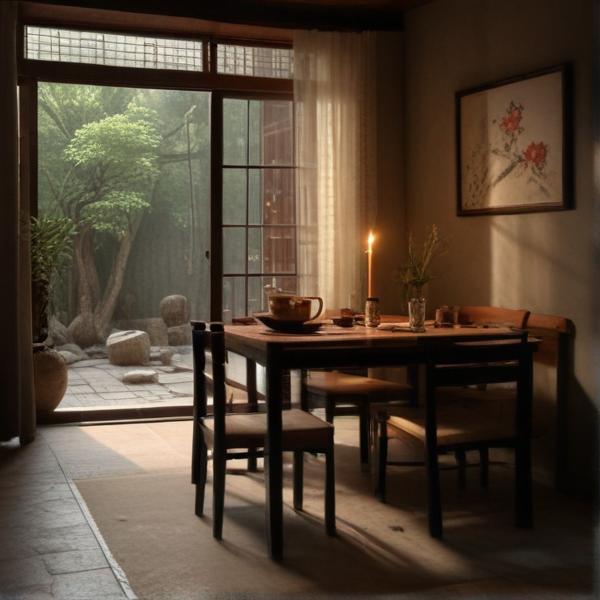基本信息 (Basic Information)
含义与用法 (Meanings & Usage)
中文核心释义 (Core Chinese Meaning): 一种大口小底的陶制盛器,多用于盛水、酿酒等
英文核心释义 (Core English Meaning): a large-mouthed, small-bottomed earthenware jar or urn, often used for holding water, wine, etc.
象形意义 / 为何这么写 (Pictographic Meaning / Writing Rationale)
文言文释义 (Classical Chinese Meaning)
文言文中“瓮”的含义与现代用法基本相同,指大口小底的陶制器皿。Similar to modern meaning; in Classical Chinese '瓮' referred to a large-mouthed pottery vessel.
深入学习 (In-depth Study)
字源故事 (Origin Story)
字形演变 (Character Evolution)
常用词语和例句 (Common Words & Examples)
酒瓮 (wine jar)
农家自酿的酒瓮里飘出淡淡的酒香。
Eng: A faint aroma of wine wafted from the farmer’s homemade wine jar.
水瓮 (water jar)
请把水瓮里的水倒出来换新鲜的。
Eng: Please pour out the water in the water jar and refill it with fresh water.
相关成语 (Related Idioms)
瓮中捉鳖
Meaning: to catch a turtle in a jar; to easily capture someone or something (trapped with no escape)
多语言翻译 (核心释义) (Translations (Core Meaning))
- French: jarre (en terre cuite), urne
- German: Steingutkrug, Tonurne
- Spanish: tinaja, vasija (de barro)
- Italian: orcio, giara di terracotta
- Portuguese: ânfora, pote de cerâmica
- Russian: глиняный кувшин, большая урна
- Arabic: جرة كبيرة (فخارية)
- Persian: ظرف سفالی بزرگ، کوزه
- Dutch: grote aardewerken kruik, urn
- Polish: duży gliniany dzban, urna
- Vietnamese: vại gốm lớn, lu đựng nước
- Ukrainian: велика глиняна діжка, урна
视频学习资源 (Video Learning Resources)
通过以下链接在热门视频网站搜索 "瓮" 的更多讲解:
Search for more explanations of "瓮" on popular video sites:
- 在 Bilibili.com 搜索 "瓮 字源 说文解字" (Search on Bilibili)
- 在 YouTube.com 搜索 "Weng character origin etymology" (Search on YouTube)
网络参考 (Web References for "瓮") ()
网络内容摘要 (Web Content Summary):
瓮(拼音:wèng)是一个常用汉字,最初出现在古代的小篆中。本义指一种陶制盛器,特点是“小口大腹”,常用来储水或其他液体。Wèng is a commonly used Chinese character that first appeared in ancient scripts. Its original meaning refers to an earthen jar with a small mouth and a big belly, typically used for storing water or other liquids.
- 象形与起源: “瓮”从“瓦”旁,象形其罐状,形声字,显示出容器的形状。Pictographic origin: The character contains the “瓦” (tile/earthenware) radical, picturing the jar’s shape, and is phono-semantic.
- 异体字: “瓮”有异体字“罋”,在古籍中二者可以互换使用。Variant forms: “瓮” and its variant “罋” may be used interchangeably in ancient texts.
- 常见用法/词语: “瓮中捉鳖”是相关成语,意思是易于控制或捕捉某人某事。Common phrase: The idiom “瓮中捉鳖” (to catch a soft-shelled turtle in a jar) means to easily control or capture someone/something, as they have no way to escape.
- 易混点: “瓮”与“瓶”不同,古时“瓶”专指汲水器,“瓮”则为更大的储器,两者不能混淆。Common confusion: “瓶” (píng, bottle) in ancient times referred specifically to a drawing vessel for water, while “瓮” was a larger storage vessel; they should not be confused.
文化背景: 瓮在古代生活中有重要地位,用于盛酒、腌菜等,现今在成语、民间故事中仍可见其身影。Cultural background: In ancient life, “瓮” was important for storing wine, pickled vegetables, etc., and still appears in idioms and folk stories today.
瓮的解释|瓮的意思|汉典"瓮"字的基本解释 - 漢典
瓮. 罋、甕 wèng 〈名〉 (1) (形声。 从瓦,公声。本义:陶制盛器,小口大腹) (2) 同本义 [urn;earthen jar] 罋,汲缾也。—— 《说文》 瓮,瓶也。—— 《广雅·释器》 罋,瓶也。 (3) 按,"瓶"是汲水器,不是今天的所谓瓶 抱甕而出灌。《庄子·天地》
瓮(汉语汉字)_百度百科
瓮(读作:wèng)为现代汉语通用规范二级字,该字最早见于《说文解字》的小篆,其本义为陶制盛器,小口大腹。瓮有异体字"罋",本为二字,该字也最早见于《说文解字》的小篆,该字本字作"𦉥 ",本义是汲水器 。后来二字完全混同。
更多图片 (瓮 More Images) ()
